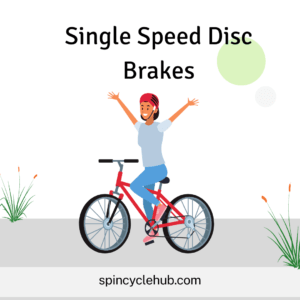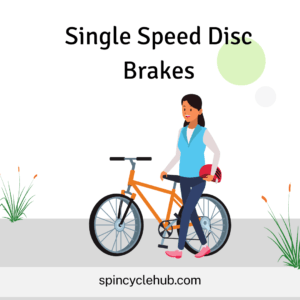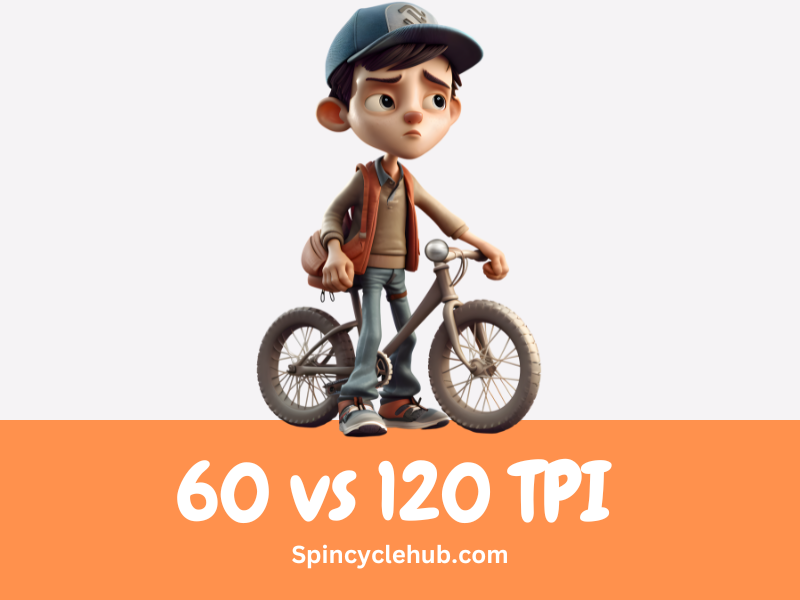Introduction
If you’re an avid cyclist or someone who simply enjoys the freedom and thrill of riding a bike, you’ve likely encountered the ever-growing trend of single-speed bikes. These bicycles, with their minimalist design and straightforward mechanics, have captured the hearts of many riders seeking a pure and uncomplicated cycling experience. One crucial component that can greatly enhance the performance and control of a single-speed bike is the choice of brakes. In this article, we’ll explore the world of single-speed disc brakes, delving into their advantages, compatibility, installation, and why they have become a popular choice for riders seeking the perfect balance between simplicity and control.

Understanding Single Speed Bikes
Before we dive into the realm of disc brakes, let’s take a moment to understand what makes single-speed bikes so appealing. Single-speed bikes, as the name suggests, have only one gear ratio, which means you have a single gear for both climbing hills and cruising on flats. This simplicity translates into lower maintenance requirements, as there are no complex gear mechanisms to adjust or worry about. Single-speed bikes are known for their durability, ease of use, and the sense of connectedness they provide to the road.
While single-speed bikes offer a range of benefits, it’s important to acknowledge that they may not be suitable for every cyclist or terrain. The lack of multiple gears can pose a challenge when faced with steep inclines or high-speed descents. However, for riders who value the purity and challenge of a single-speed setup, these bikes can be a source of immense joy.
The Role of Brakes in Cycling
When it comes to cycling, brakes play a crucial role in ensuring rider safety and control. They allow you to slow down, stop, and navigate various terrains with confidence. In the world of brakes, there are different types available, including rim brakes, coaster brakes, and disc brakes. While each has its merits, disc brakes have gained popularity for their superior performance and reliability.
Disc Brakes vs. Rim Brakes
Disc brakes and rim brakes are the two primary types of brakes used in modern bicycles. Rim brakes work by applying friction directly to the rim of the wheel, while disc brakes utilize a rotor mounted on the wheel hub. Disc brakes offer several advantages over rim brakes, making them an enticing choice for many cyclists.
One significant advantage of disc brakes is their superior stopping power. The rotor and caliper design provide enhanced braking performance, allowing for quick and controlled stops even in wet or muddy conditions. This can be especially beneficial for single-speed bikes, as the ability to stop efficiently and reliably can greatly enhance the overall riding experience.
Additionally, disc brakes are not affected by the rim’s condition or wear, which is a common concern with rim brakes. They also generate less heat during prolonged braking, minimizing the risk of overheating the rim and tire. However, it’s worth noting that disc brakes may add some weight to the bike and come at a slightly higher cost compared to rim brakes.
Single Speed Bikes and Disc Brakes
Now that we’ve explored the advantages of disc brakes, let’s consider their compatibility and benefits when paired with single-speed bikes. Disc brakes have become a popular choice for single-speed enthusiasts due to the added control and stopping power they offer.
One of the key advantages of disc brakes on single-speed bikes is the ability to modulate braking power precisely. With a single gear, controlling speed becomes crucial, especially when riding downhill or in traffic. Disc brakes provide a responsive and reliable braking system, allowing riders to navigate different terrains and situations with confidence.
Furthermore, the compatibility of disc brakes with single-speed bikes has improved significantly over the years. While it’s true that some older single-speed frames may not have disc brake mounts, many newer models come equipped with the necessary fittings. Retrofitting older frames or seeking out single-speed frames specifically designed for disc brakes are viable options for riders looking to enjoy the benefits of this braking system.
Choosing the Right Disc Brakes for Your Single Speed Bike
When it comes to choosing disc brakes for your single-speed bike, several factors come into play. Rotor size, caliper type, and brake pad material are all important considerations. While high-performance options are available, it’s crucial to strike a balance between performance and budget.
Rotor size plays a significant role in determining braking power. Larger rotors generally provide more stopping power, making them suitable for riders who tackle challenging terrain or require aggressive braking. Smaller rotors, on the other hand, may offer sufficient stopping power for riders who predominantly ride on flat or less demanding routes.
Caliper type is another consideration. There are two main types: mechanical and hydraulic. Mechanical disc brakes are generally easier to maintain and adjust, making them a popular choice for riders who prefer a hands-on approach. Hydraulic disc brakes, on the other hand, offer greater modulation and power but may require more specialized knowledge for maintenance.
Lastly, the brake pad material can affect performance and durability. Organic pads tend to be quieter and offer better initial bite, while metallic pads are known for their longevity and consistent performance in wet conditions. Choosing the right brake pad material depends on your riding style and the conditions you typically encounter.
Installation and Maintenance
Installing disc brakes on a single-speed bike is a relatively straightforward process. While it’s recommended to have a professional mechanic perform the installation, experienced riders with mechanical aptitude can undertake the task themselves. Detailed instructions can be found in the brake manufacturer’s documentation.
Once installed, regular maintenance and adjustment are necessary to ensure optimal performance. Periodically check the brake pads for wear and replace them when needed. Also, keep an eye on the rotor for signs of warping or damage. Adjustments may be required to achieve the desired lever feel and braking response. If you’re uncertain about any aspect of maintenance or adjustment, consulting a professional mechanic is always a wise choice.
Riding Experience and Performance
Personal experiences with single-speed bikes equipped with disc brakes have often been overwhelmingly positive. The combination of a single-speed drivetrain and disc brakes offers a unique and engaging riding experience. The simplicity of a single gear, coupled with the precise control and stopping power of disc brakes, allows riders to focus on the pure joy of cycling.
Whether cruising through city streets or tackling off-road trails, single-speed bikes with disc brakes provide riders with a sense of freedom and confidence. The ability to modulate speed precisely and stop quickly when needed enhances the overall riding experience, making every journey a thrilling and enjoyable one.
Safety Considerations and Precautions
While disc brakes offer superior performance and control, it’s essential to understand and practice proper braking technique. As with any braking system, sudden or excessive braking force can lead to loss of traction and potential accidents. Gradually apply braking force, especially in wet or slippery conditions, to maintain control and stability.
Regular brake inspection and maintenance are paramount to ensure safe riding. Periodically check the brake pads for wear and replace them when necessary. Keep an eye on the rotor for any signs of damage or warping. Maintaining a clean braking surface and ensuring the brake system is free from debris or contamination will contribute to reliable and consistent performance.

Conclusion
Single-speed bikes with disc brakes offer the perfect blend of simplicity and control. The minimalist design and low maintenance of single-speed bikes combined with the enhanced stopping power and modulation of disc brakes create an optimal riding experience. Whether you’re a dedicated single-speed enthusiast or someone looking to explore the world of cycling, the combination of single speed and disc brakes is worth considering. Embrace the freedom, enjoy the ride, and experience the thrill of mastering your single-speed bike with the confidence that disc brakes provide.
FAQs (Frequently Asked Questions)
1. Are disc brakes suitable for all types of single-speed bikes?
– While disc brakes are compatible with many single-speed bikes, it’s essential to check if your frame has the necessary disc brake mounts or consider purchasing a frame specifically designed for disc brakes.
2. Can I install disc brakes on my existing single-speed bike?
– Retrofitting disc brakes on older single-speed frames is possible but may require some modifications. It’s recommended to consult with a professional mechanic for guidance.
3. Do disc brakes require more maintenance compared to rim brakes?
– Disc brakes may require slightly more maintenance, including checking brake pad wear and rotor condition. However, with regular inspections and proper care, disc brakes can provide reliable performance.
4. Are disc brakes more expensive than rim brakes?
– Generally, disc brakes are more expensive than rim brakes. However, there is a wide range of options available at different price points, allowing riders to find a suitable balance between performance and budget.
5. Can I upgrade my existing single-speed bike with disc brakes?
– Upgrading an existing single-speed bike with disc brakes is possible, but it’s important to consider compatibility, such as frame and fork clearance, as well as the cost of the upgrade. Consulting a professional bike shop can help determine the feasibility of the upgrade.
Remember, choosing the right components for your single-speed bike is a personal decision that depends on your riding style, preferences, and budget. Consider your needs and seek expert advice when necessary to ensure a safe and enjoyable cycling experience.
- Bicycling.com – The Advantages of Disc Brakes
- This article from Bicycling.com provides detailed insights into the advantages of disc brakes, including improved stopping power, better performance in wet conditions, and increased durability.
- Global Cycling Network (GCN) – Single Speed Bike with Disc Brakes
- This YouTube video by Global Cycling Network (GCN) showcases a single-speed bike equipped with disc brakes and discusses the benefits and riding experience of this combination.
Watch this one,
Video Credits – Shifter
DOWNLOAD THIS ARTICLE :Click Here
You May Also Like




